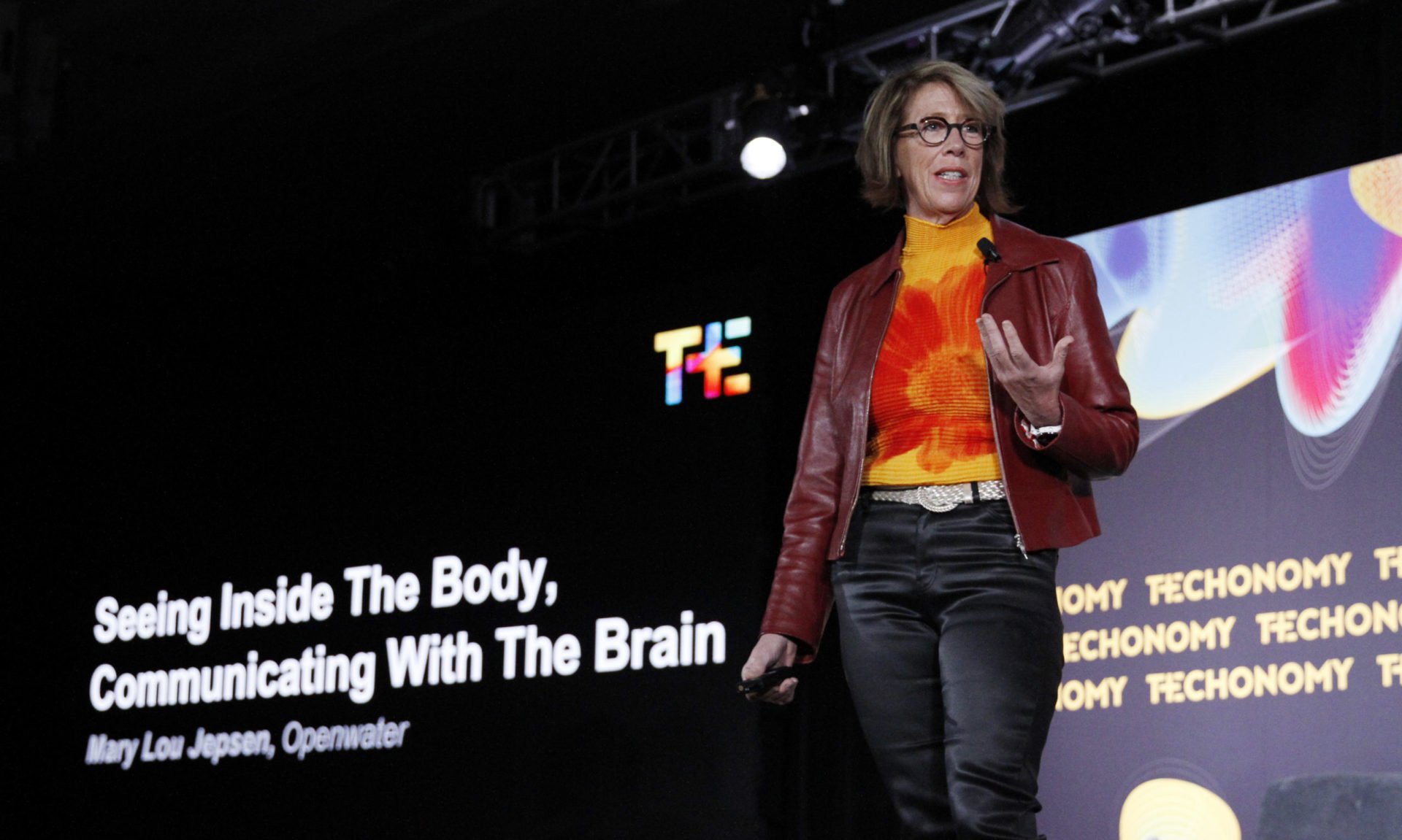A transformation in medical imaging could improve healthcare around the world and potentially pave the way for brain-machine communication, Openwater CEO Mary Lou Jepsen told attendees at Techonomy 2018.
While medical imaging such as MRIs have been used to diagnose cancer in billions of people since they were first implemented, the underlying technology hasn’t improved in three decades, Jepsen said. It’s expensive and hard to use, which is why two-thirds of people in the world lack access to these tools.
Jepsen, a scientist and engineer by training, knows how to take high-cost, sophisticated equipment and re-imagine it for mass production at low cost. As a founder of One Laptop per Child, she helped bring the $100 laptop into being. Now, her goal is to do the same for medical imaging systems. “What I’m trying to do is to massively lower the cost and the size of medical imaging systems so that we can see inside our bodies and brains, and I think that can have a transformative impact on health,” she said.
During her presentation, Jepsen used a laser on her own hand to show that human skin is translucent to red light. By combining red light with modern technology used for wearable devices, she envisions replacing the monolithic equipment required for today’s MRI, mammography, and other imaging systems with something as small as a hat or scarf that would fit over the target area of the body. Advances from holography, ultrasonic scanning, and strobe lasers will also be key components, she said.
Today, the Openwater imaging system has gone through prototyping and is in the buildout phase at the company’s San Francisco facility, where experts are using rats and meat to test its accuracy and reliability. Already, the technology has overcome fundamental imaging hurdles — such as distinguishing among bone, tissue, and tumors — and even has enough resolution to detect neurons firing. “It was mind-blowing to us,” she said. “That’s pretty transformative in what it can do for our ability to understand the brain.” Among the possible uses: better diagnosing and monitoring the 2 billion people globally who suffer from some sort of neurological disease.
Finally, Jepsen spoke about the possibility of mind-machine communication, summing up studies spanning several years that proved it is possible for a machine to reconstruct at least grainy images of what a person was thinking or dreaming about. This leads to some ethical questions about how much people would want machines to be able to “read” from their minds. But as imaging technology improves, this feature will become more feasible than ever. “I think this is inevitable,” she said about bringing a low-cost, high-resolution, medical-grade imaging technology to market.
Watch Jepsen’s talk:
We’re Close to Replacing the MRI with a Hat
How about replacing big, expensive MRI and other imaging equipment with a hat or a scarf? Mary Lou Jepsen showed the audience at Techonomy 2018 just how close it is to reality.

















